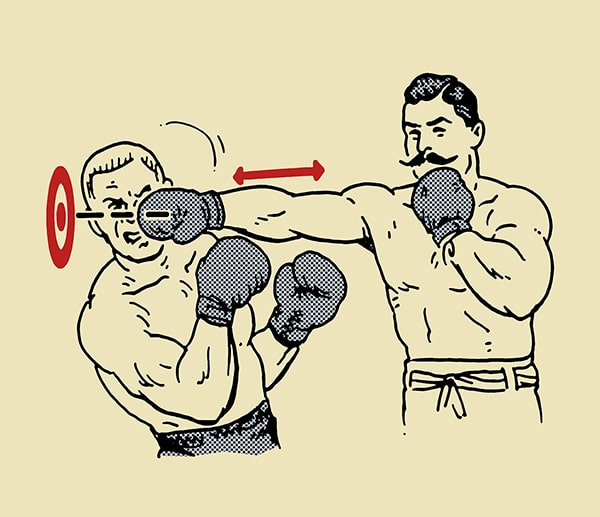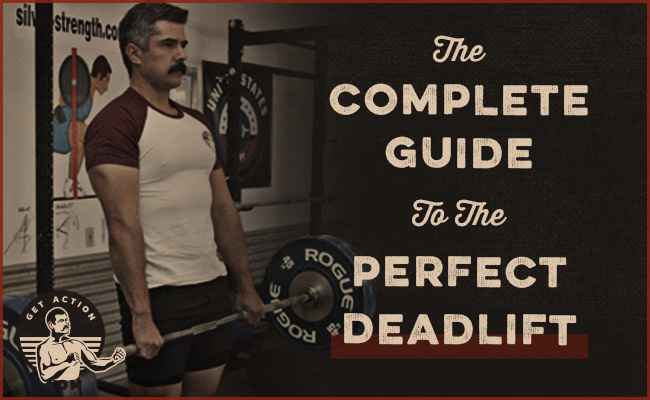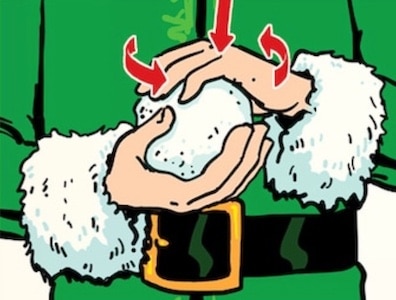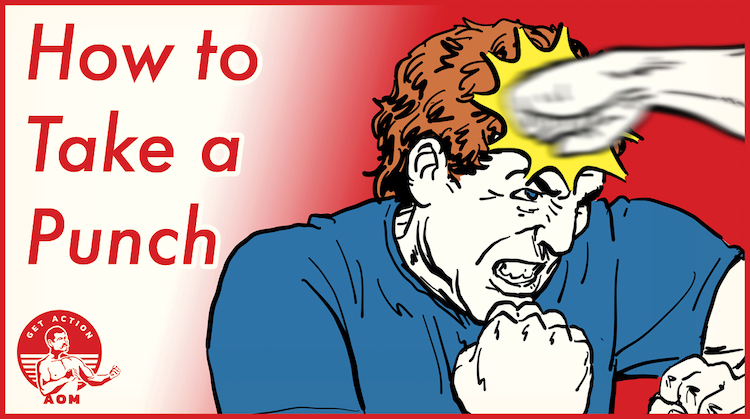
Typically when we imagine ourselves in a fight, we visualize ourselves pummeling our opponent, while somehow emerging from the melee unscathed.
The reality is that in most fights, the other guy will give just as much as he takes, which means you’re going to get hit.
So how do you take a punch so that it does the least amount of damage possible?
Below we provide guidance on the answer. As is obligatory to state in every self-defense piece: the best way to take a punch is to prevent a punch in the first place. Avoiding fights and de-escalating conflicts should always be your first move.
How to Take a Punch to the Head
When you’re fighting, you want to keep your hands up, and hopefully use them to block shots to the head. But punches will still get through. When they do, these other tactics will help mitigate the damage they cause.
Keep your head steady (by strengthening your neck muscles). The thing that causes knockout punches to the head isn’t usually the punch itself. Instead, it’s the force of its impact whipping your head to the side and causing your brain to slam against the inside of your skull.
To reduce the whiplash from a punch, you need to reduce the amount of movement that happens to your head after the punch. One way to do this is to strengthen your neck muscles so that you can hold your head steady when it takes a hit.
Deadlifts and shrugs can go a long way in strengthening the trap muscles at the bottom of your neck. Shoulder presses can also work the traps.
If you’re really serious about strengthening your neck, you can include neck harness exercises. This allows you to basically lift weights with your neck. MMA fighters and athletes in contact sports like football, hockey, and rugby use neck harness exercises to strengthen their necks so that they can better handle the blows to their noggins.
Clench your jaw and press your tongue up to the roof of your mouth. This reduces the chance of your jaw getting broken when the incoming fist meets your face. Also, clenching your jaw flexes your neck muscles which will help reduce the whiplash from a punch, and the subsequent sloshing around of your brain.

Roll with the punches. Imagine a speeding car running into a rigid concrete wall. The result is total destruction as the energy from the speeding vehicle is suddenly arrested. Something similar happens when you stand stiffly and let an incoming punch hit you.
Now imagine a speeding car running into an air mattress. The air mattress “gives” to the force of the vehicle, dissipating the energy from the collision.
When you take a punch, you want to be like that imaginary air mattress. You want to give a bit to the punch so that you dissipate its energy.
You can do this by rolling with a punch. Rolling with a punch simply means moving your head and body in the same direction as the punch’s trajectory. If a punch lands as you’re rolling with it, the impact won’t be as jarring.
Rolling with a punch takes some practice, but it’s an effective tool in surviving a punch to the head.

Brace for it. If you can’t roll with a punch, your last resort tactic is to brace yourself for its impact. Clench your jaw, flex your neck, and tuck your chin to your chest. At the same time, bend your knees and lower your butt. Your goal is to try to get the punch to hit the top of your head about four inches above your eyebrows. This is still going to hurt, and you’ll likely get some cuts to your forehead and head, but it reduces the chances of getting knocked out.
How to Take a Punch to the Body
Strengthen your core. Boxers spend a lot of time doing sit-ups and other core exercises. They do this in part to strengthen their core to receive body shots. In fact, boxers will often use a medicine ball to simulate body punches, strengthening the ability of their abdominal muscles to clench and brace when receiving these kinds of blows.
Besides sit-ups and medicine ball drops, other ways to strengthen your core include barbell squats, deadlifts, and kettlebell swings. Crawling movements can also help develop your core muscles.
Brace your core using the Valsalva maneuver. For punches that land directly on your ab muscles, your best bet is to simply brace for impact by bracing your core. The easiest way to do this is to perform the Valsalva maneuver. Take a big, quick breath and hold it. This will cause your core muscles to flex and become rigid.
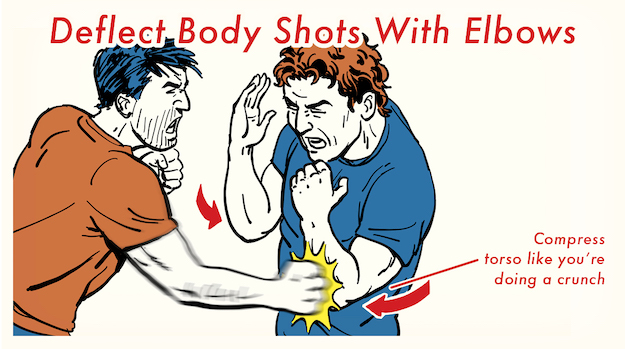
Deflect body shots to the liver and kidneys with your elbows. Bracing your core won’t do much for shots at your liver and kidneys. A well-placed punch to these organs, and you’ll drop to your knees.
Your best bet for managing liver and kidney punches is to deflect them with your elbows.
Ideally, in a fight, you have your hands up in a good defensive position. In this position, your elbows are near the middle of your torso. If you see a punch coming towards the side of your torso, keep your hands up, but compress your torso down as if you were doing a crunch. This will bring your elbows even closer to your torso and shrink the available space on your body for impact. If all goes according to plan, the punch going towards your kidney will glance off your elbow.
Tags: Self-Defense & Fighting


